The total computerization of the population is an absolute blessing, but if at the initial stages it was mainly personal computers, now this disproportion has turned in the opposite direction – most families have a laptop at their disposal, or even more than one. And this is quite understandable – mobility is above all. Moreover, in terms of most parameters, laptop computers are not inferior to desktops. Today you will find out where and when the first notebooks appeared and follow their evolution, marked by many technical breakthroughs.
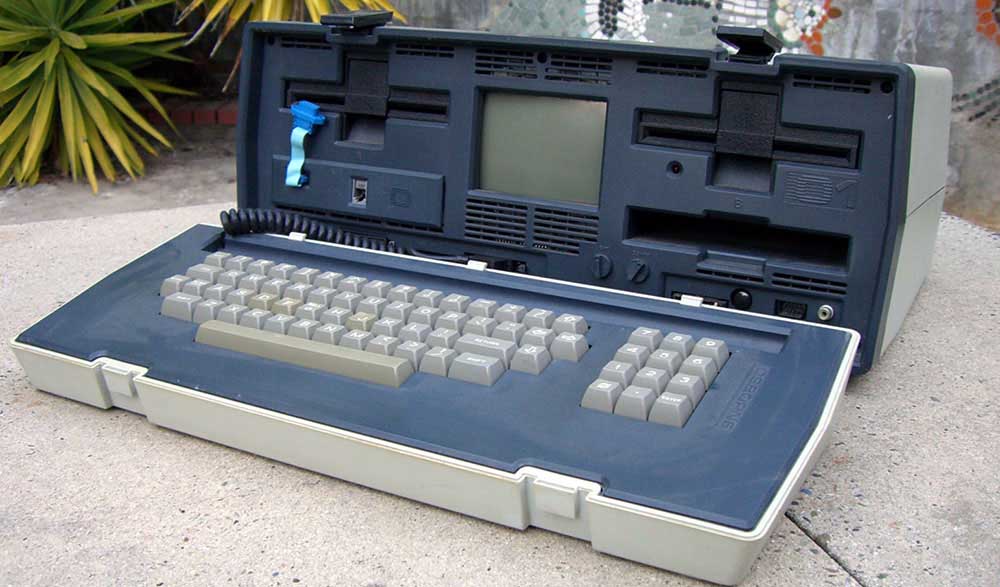
What is a laptop
The English word notebook has several meanings, the most common of which is “notebook”. The first flip-top mobile devices did indeed resemble the thick notebook that was fashionable in those days. And since the miniaturization of the technological process in the 70s was far from the current level, when the famous Moore’s law is no longer fulfilled, the characteristics of such devices were noticeably inferior to those of personal computers. Be that as it may, the name “laptop” for mobile PCs stuck, and the improvement of the element base has led to the fact that a powerful modern laptop is much more productive than the average desktop computer. True, the size of the display cannot be increased endlessly, otherwise the main advantage, mobility, is lost.
Who invented the laptop
Microbiologist Alan Kay put the idea for a laptop back in 1968, when Intel developed one of the first mainstream 4004 processors. In his view, such a device, called by the scientist Dynabook, was supposed to be the size of an A4 sheet and be able to work autonomously. Alas, the microelement base of that time did not allow these ideas to be brought to life.
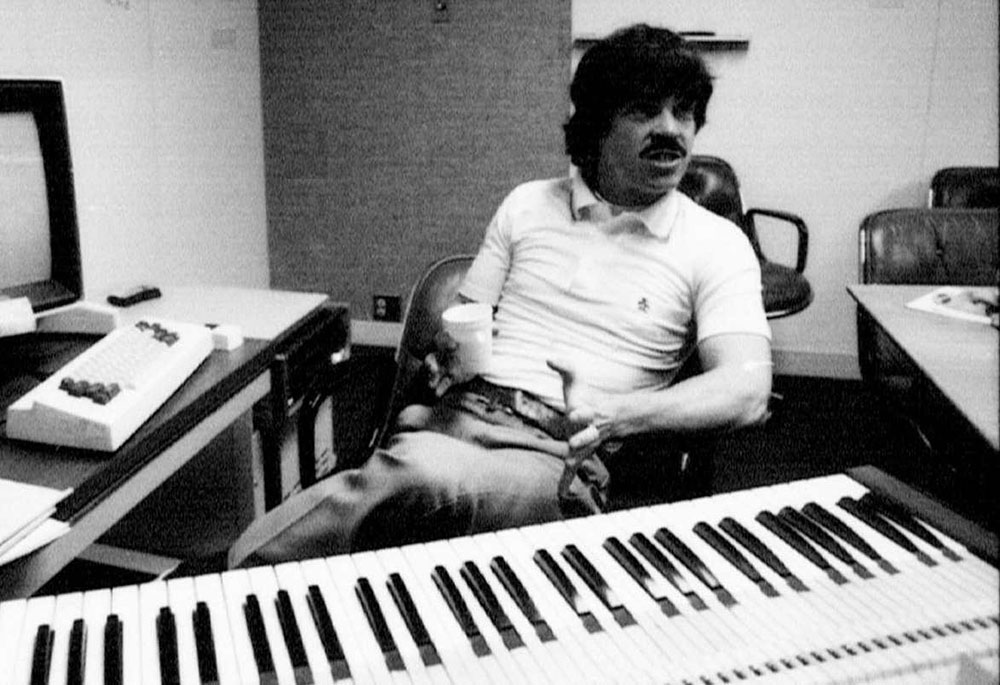
And no one would have remembered Kay today if he had not moved to Xerox, where he was directly involved in the development of the world’s first laser printer, thanks to which the company became famous, and its name even became a household name. And later it was Alan Kay, together with Bob Metcalfe, who developed the Ethernet protocol, which is actively used in the construction of local networks. So to the question of who invented the laptop in the form in which it was embodied in hardware, but much later, there is a very specific answer.

As for the question of what year the first working prototype of a laptop appeared, then here too the story goes without the subjunctive mood, since the primacy in this matter is assigned to the employee of the Grid System, William Mogridge. In 1979, he was commissioned by NASA to develop a laptop, which he called the Grid Compass, which turned out to be well equipped by the standards of that time. Judge for yourself: the amount of its RAM was as much as 340 kilobytes, however, part of it was occupied by the operating system. And although its dimensions were quite compact, apart from the thickness, there was no question of autonomy. Batteries of this size, capable of powering the system for at least half an hour or an hour, were not yet available. The drive was not included in the delivery set either; it had to be purchased separately and connected via the GPIB port.But the device cost about 8 thousand dollars, that is, only fairly wealthy people could be its owners. However, this did not prevent the Grid System from producing its product for 8 years.
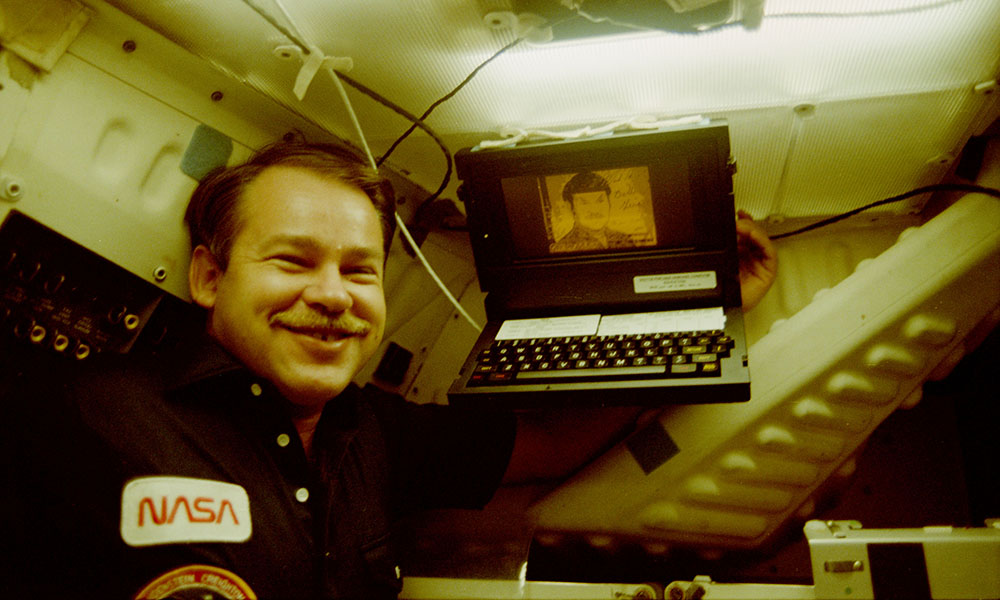
The first standalone laptop did not have to wait long: in 1981, it was developed by an entrepreneur with good engineering experience, Adam Osborne. The model turned out to be not too expensive and quite productive: a 4MHz Z80 processor, 64KB of RAM, a 5-inch display with the ability to connect an external monitor, two 5-inch drives and a set of serial and parallel ports. Such a laptop cost less than $ 2,000, but due to marketing mistakes, the laptop was produced for only 2 years, after which Osborne Computer Corporation declared itself bankrupt.
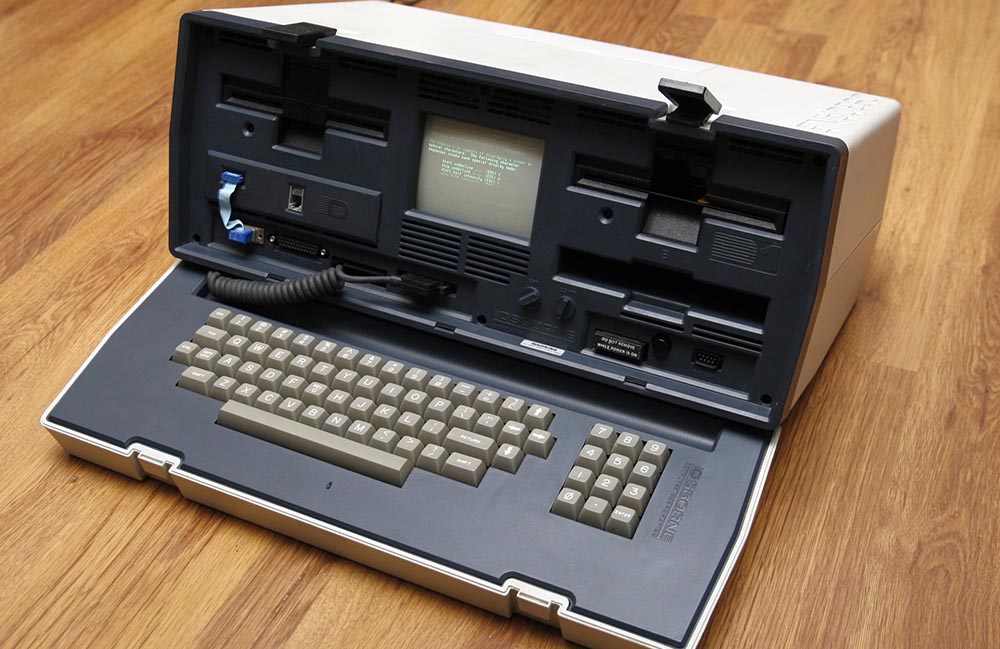
In the same year, IBM presented to the public a version of its own laptop, and it was the IBM PC that became the de facto standard in this area.

Two years later, two more computer giants, Compaq and Toshiba, joined the race, contributing to the improvement of devices. And the first personal laptop with an LCD monitor appeared in 1984, and it was created by Apple, which is gaining momentum.

The 90s were marked by the further improvement of technologies. The real breakthrough was the development by Intel engineers of the first dedicated laptop processor, the I386 SL, which was introduced in 1990 and was characterized by the introduction of innovative voltage reduction technology. This made it possible to significantly increase the battery life of laptops, which contributed to their further popularization.

Portable PCs of those times were equipped with screens displaying 16 colors and weighed about 3 kilograms. Minimizing the production of chips made it possible to progressively increase the performance and functionality of laptops, improve the characteristics of matrices, increase the capacity of the HDD, and over time, their characteristics are almost equal to those of desktop PCs. However, among modern laptops, there is a developed hierarchy that classifies mobile PCs according to several important criteria, including cost. For example, netbooks with a display size within 7-10 inches are inexpensive, and their performance is sufficient for surfing or working with documents. There are also subnotebooks, ultrabooks and other “beeches”, and at the top of the pyramid are notebooks called Desktop Replacement (ie replacement for desktop PCs) with characteristics that are not inferior to the latter.
But the history of the appearance of a laptop can hardly be called complete – in our age of rapid technological development, and the share of the current generation will have a lot of innovations of an evolutionary and revolutionary sense.
The history of the formation of the domestic computer industry
It is worth noting that the Soviet Union lagged significantly behind the West (primarily the United States) in terms of the trace element base. But albeit with a delay, but the development in the field of computers in the USSR was carried out, and for a long time.
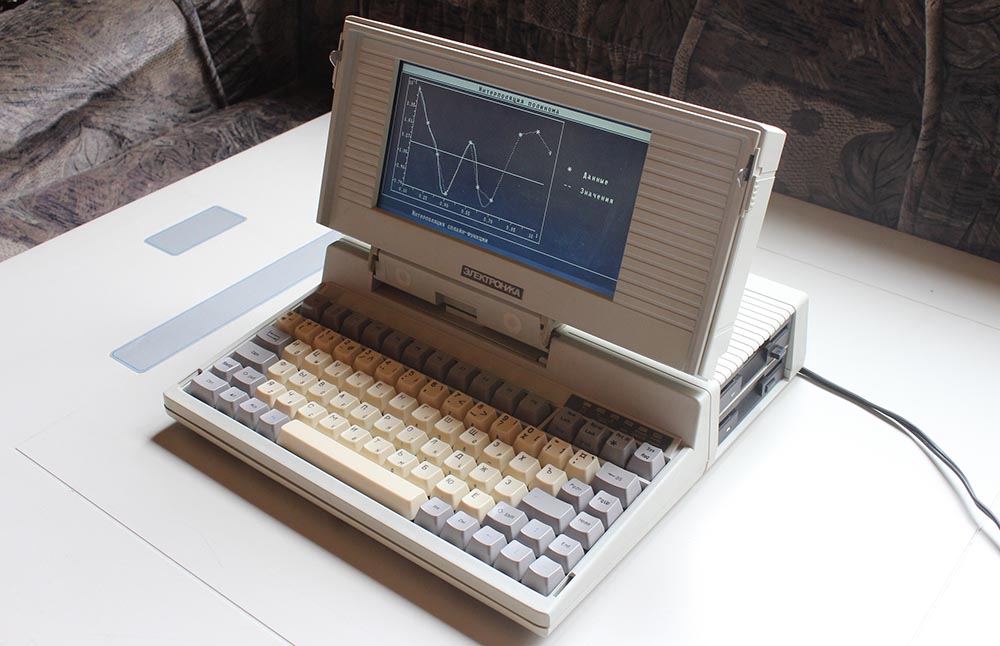
As for the creation of the first domestic laptop, it appeared in 1991 and was quite expensive. But because of the small volume of production, an ordinary citizen could not purchase it. “Electronics MC 1504” in appearance and many technical characteristics was similar to the rather popular model T1100 Plus, produced by the Japanese corporation Toshiba. 640 KB was enough to load MS-DOS and work, the display had a resolution of 650×200 pixels and could reproduce colors in CGA format.
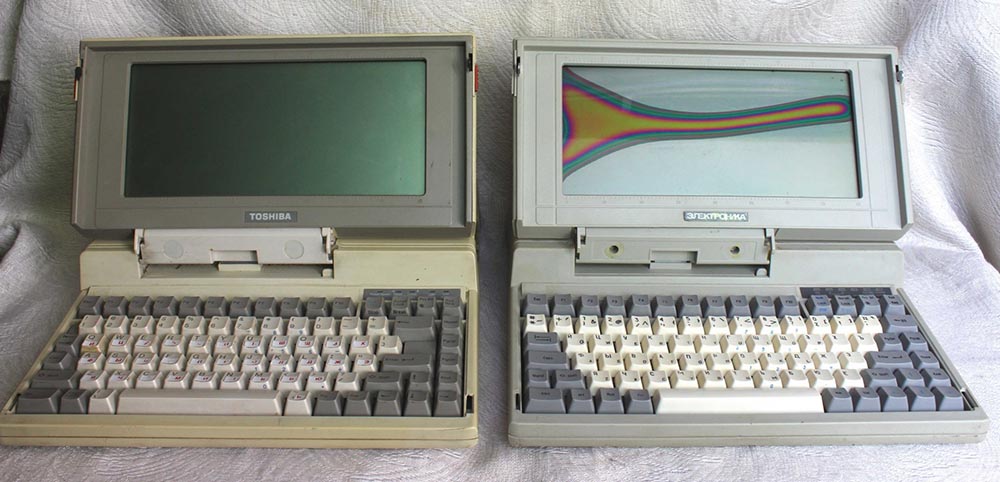
Alas, Japanese and American laptops soon completely supplanted the domestic development, which cost about $ 550 (at the then official rate, this is two average salaries in the country). We can say that the history of the development of laptops in Russia ended there, and the most popular brands in 2020-2021 were Asus, Lenovo, Acer, MSI and HP.